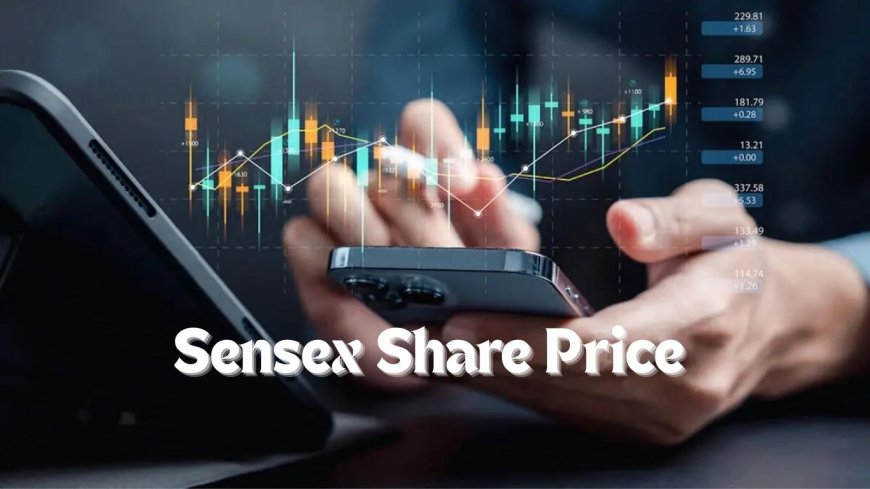Sensex Share Price: A Deep Dive into India’s Market Pulse

The Sensex, officially known as the S&P BSE Sensex, is the benchmark index of the Bombay Stock Exchange (BSE) and a barometer of India’s stock market health. It reflects the movement of 30 of the largest and most actively traded companies listed on the BSE, making it a critical indicator for investors, economists, and policy-makers.
Understanding the Sensex Share Price
The Sensex share price refers to the index's value, calculated based on the market capitalization of its constituent companies. Market participants keenly monitor its fluctuations to assess the general trend of Indian equities.
The Sensex is calculated using the free-float market capitalization method, which takes into account only those shares readily available for trading, excluding promoter holdings. The formula for computing the Sensex is:
Sensex = (Free-float market cap of 30 companies / Base market cap) × Base value (100 in 1979)
This ensures that the index accurately reflects market sentiment without being skewed by non-traded shares.
Factors Influencing the Sensex Share Price
Several macroeconomic and microeconomic variables affect the Sensex. Here are the primary ones:
1. Economic Indicators
Changes in GDP growth, inflation, interest rates, and industrial production directly impact investor sentiment, influencing stock prices and, consequently, the Sensex.
2. Global Market Trends
The performance of international indices like the Dow Jones, FTSE, or Nikkei often has a ripple effect on Indian markets, affecting the Sensex.
3. Corporate Performance
Quarterly earnings reports, mergers, acquisitions, and management changes in constituent companies can drive their individual share prices and hence the Sensex.
4. Political Climate
Elections, policy reforms, and regulatory decisions can cause market volatility. Investors often reprice assets based on their confidence in political stability and policy direction.
Companies in the Sensex and Their Market Influence
| Company Name | Sector | Market Cap (₹ Cr) | Influence on Sensex |
|---|---|---|---|
| Reliance Industries | Energy | 20,00,000+ | High |
| HDFC Bank | Banking | 10,00,000+ | High |
| Infosys | IT Services | 6,00,000+ | Medium |
| TCS | IT Services | 12,00,000+ | High |
| ICICI Bank | Banking | 7,00,000+ | Medium |
Historical Performance of the Sensex
The Sensex has come a long way since its inception in 1979, when it was set at a base value of 100 points. Here's a brief snapshot of its journey:
-
1991: Liberalization triggered a bull run; Sensex breached 1,000.
-
2008: Global financial crisis caused a sharp fall.
-
2020: COVID-19 pandemic led to a major crash and subsequent recovery.
-
2024: Crossed the 75,000 mark, signaling strong economic resilience.
Milestones
-
First crossed 10,000: February 2006
-
Touched 30,000: April 2017
-
Hit 50,000: January 2021
-
Crossed 75,000: 2024
Benefits of Tracking the Sensex
Keeping an eye on the Sensex share price can offer several advantages for investors and analysts alike:
Why Monitor the Sensex?
-
Market Trend Indicator: Helps gauge overall market direction.
-
Portfolio Benchmarking: Assists in comparing personal investments against market performance.
-
Investor Sentiment Barometer: Reflects optimism or pessimism in the economy.
-
Risk Management Tool: Helps in deciding when to enter or exit the market.
-
Policy Feedback Loop: Indicates how policies are being received by the market.
Current Trends and Future Outlook
As of 2025, the Sensex continues its upward trajectory fueled by:
-
Strong corporate earnings
-
Increased foreign institutional investment (FII)
-
Government infrastructure spending
-
Digital and green energy revolutions
However, potential headwinds like geopolitical tensions, interest rate hikes, and inflationary pressure could pose short-term volatility.
Conclusion
The Sensex share price remains a powerful reflection of India’s economic and corporate landscape. For investors, staying informed about its movement is essential for making smart, timely decisions. Whether you're a seasoned trader or a novice investor, the Sensex offers critical insights into the heartbeat of the Indian stock market.






























